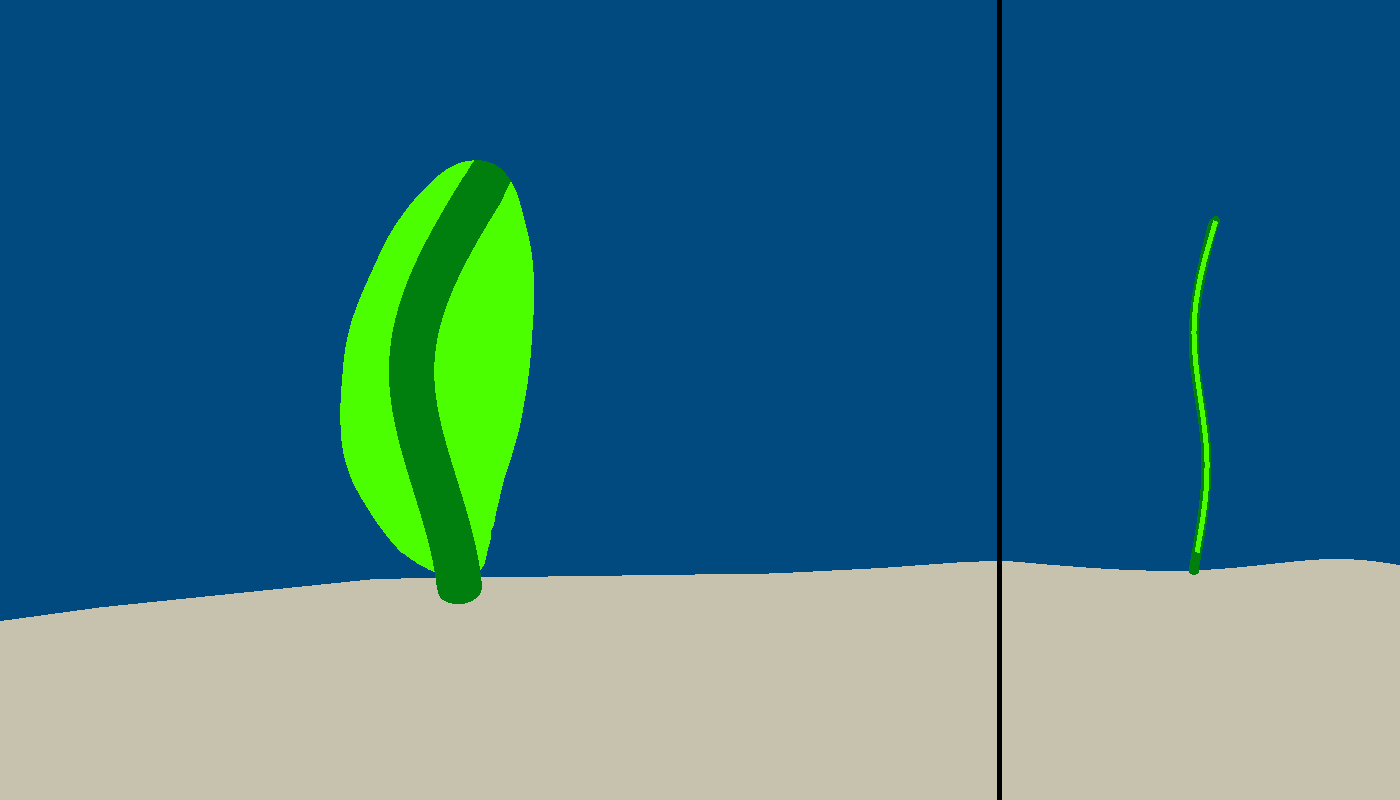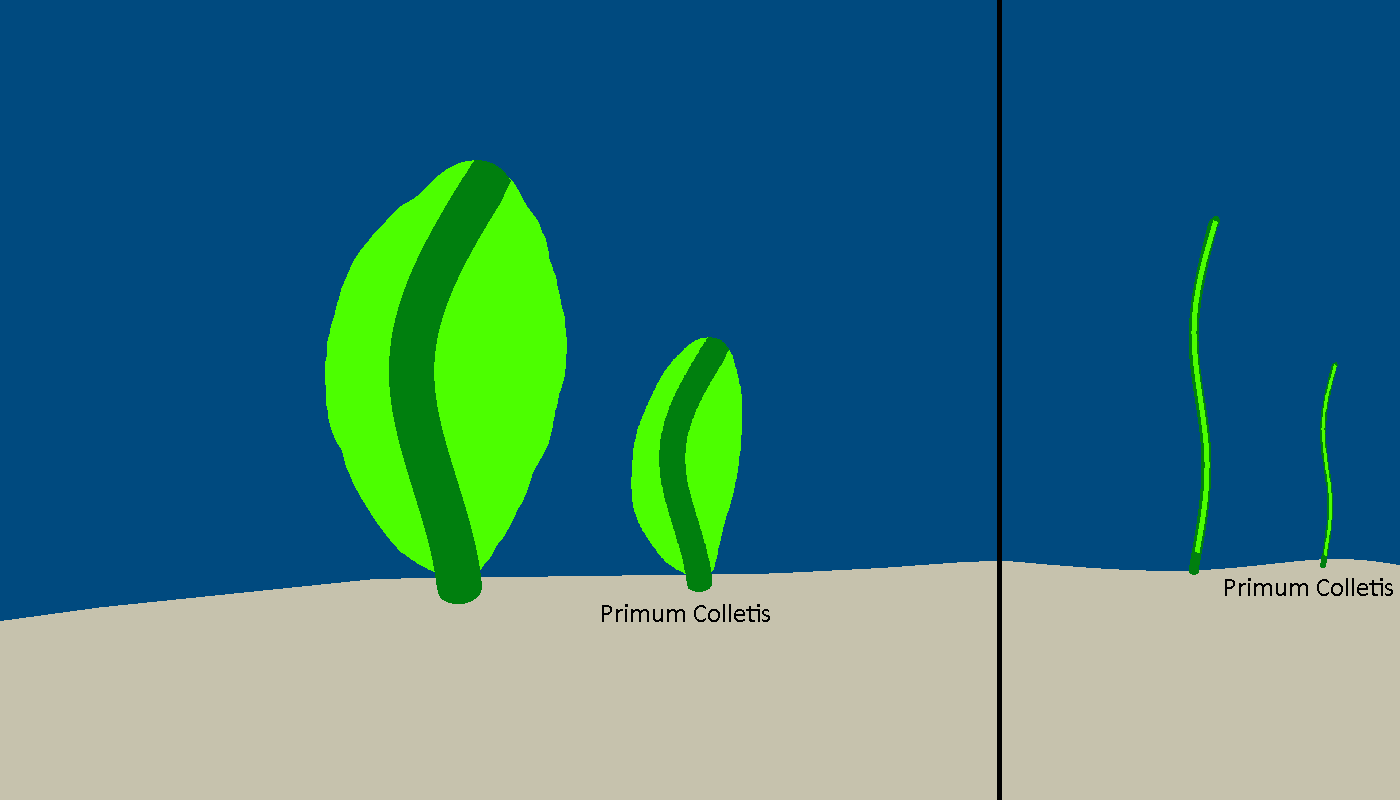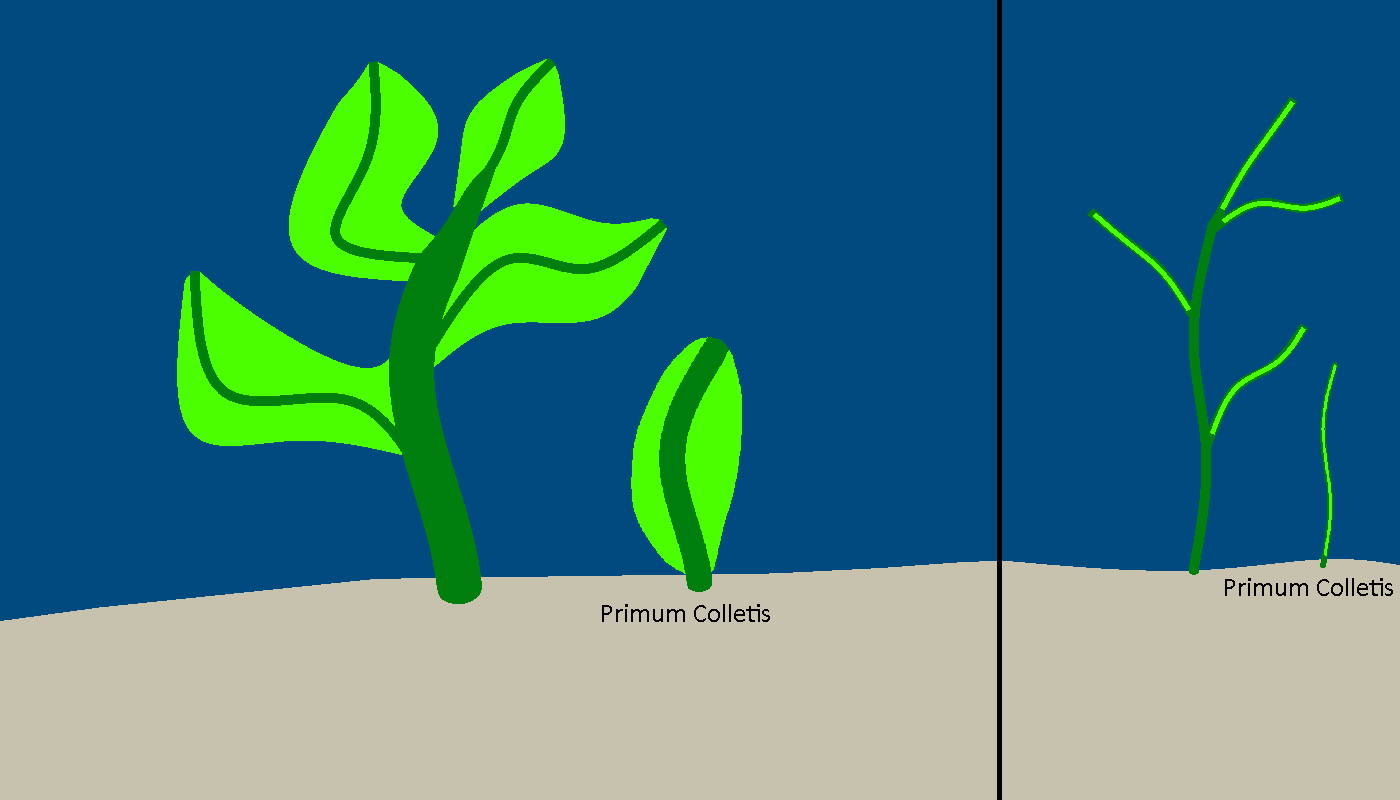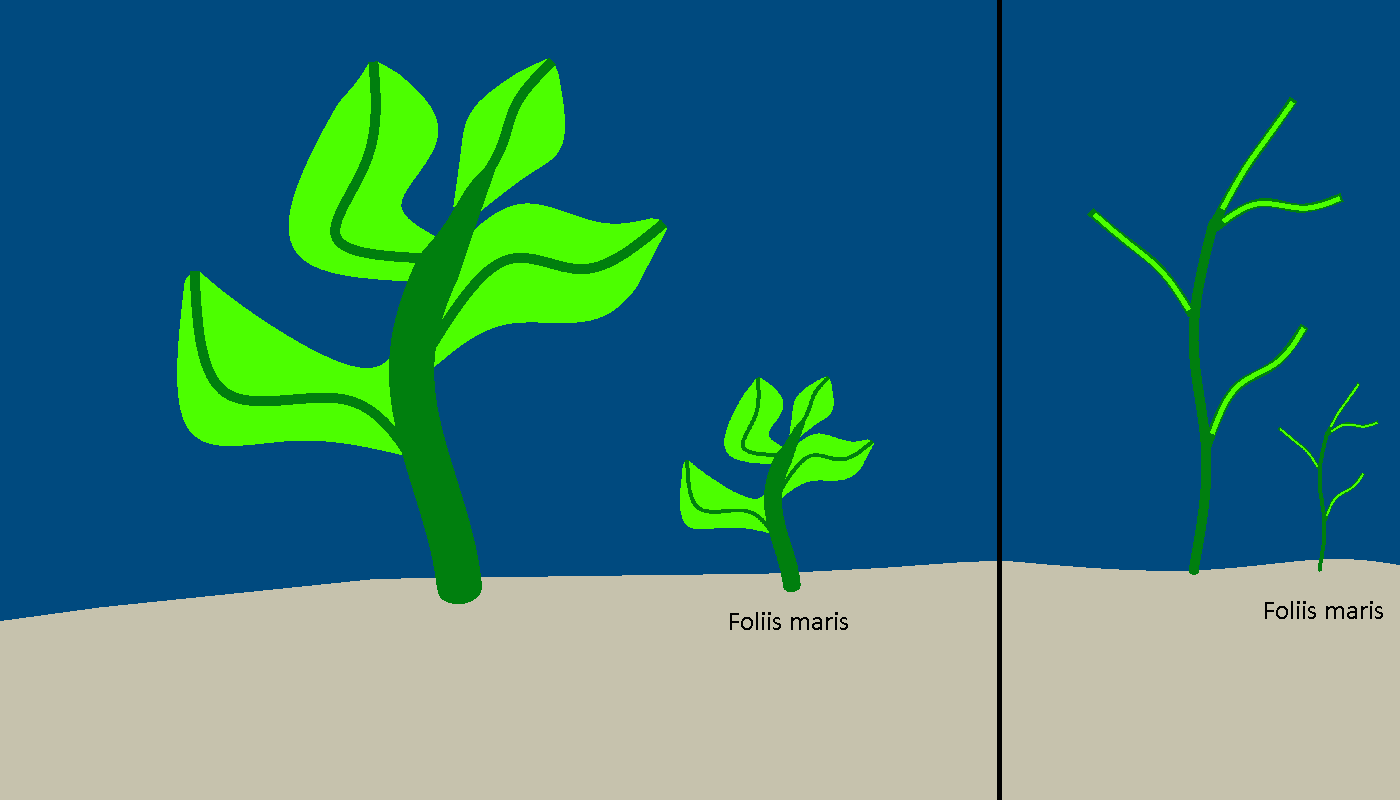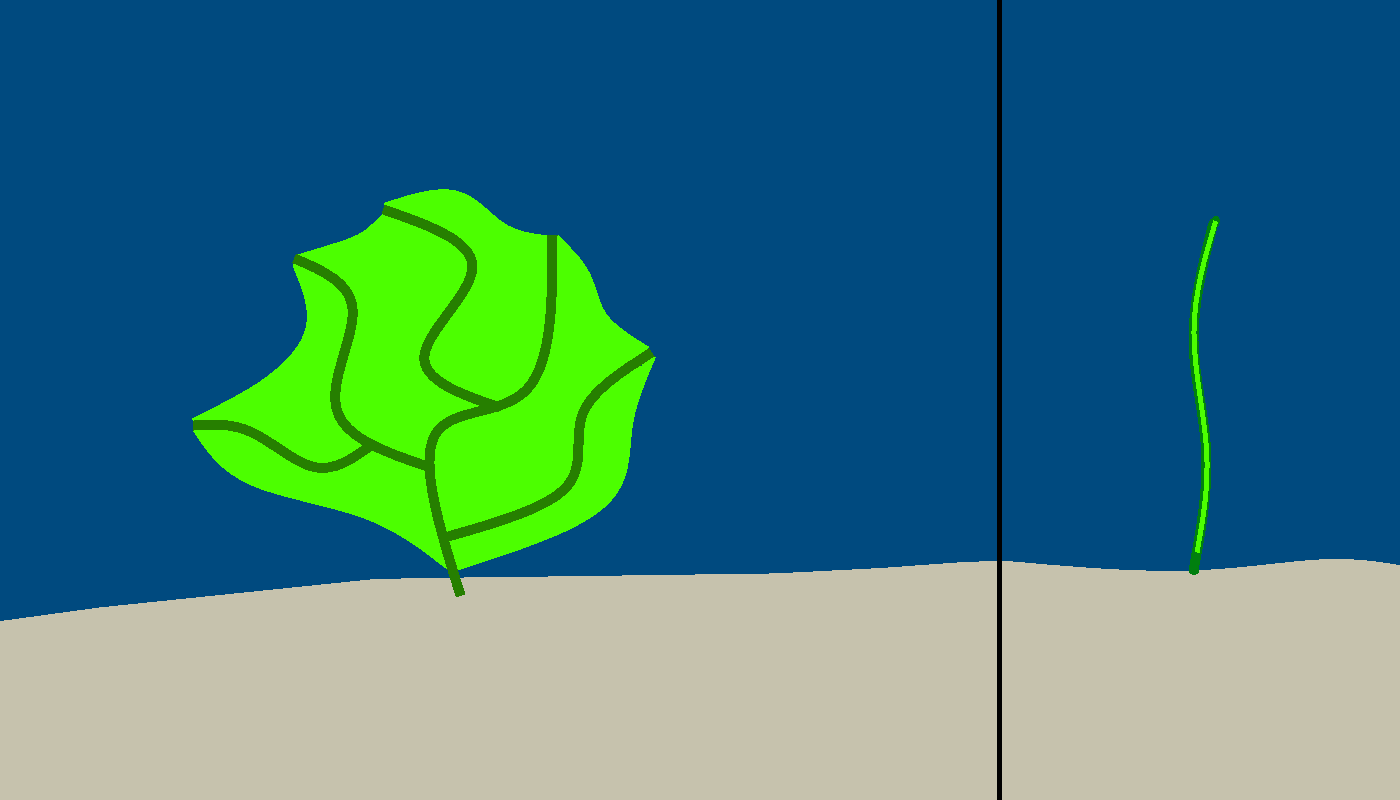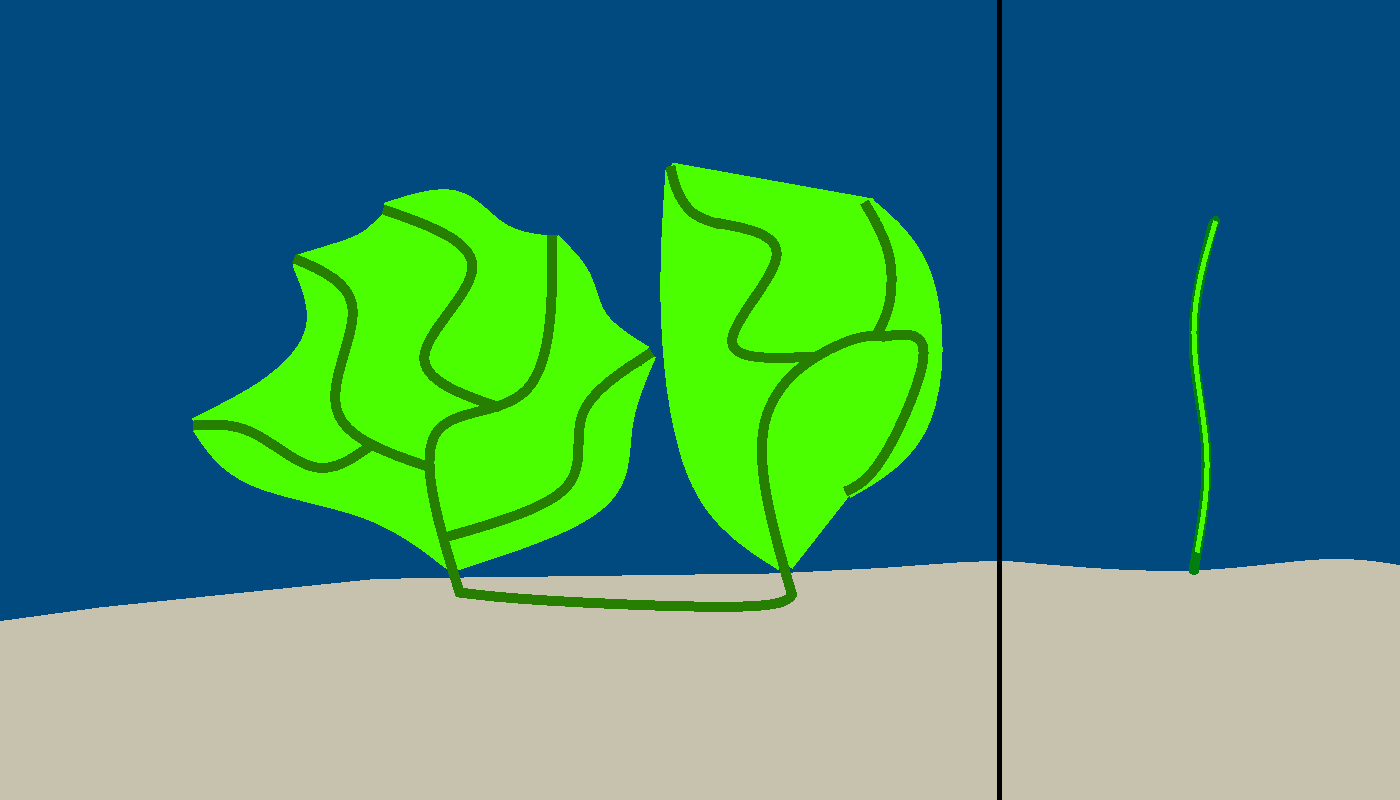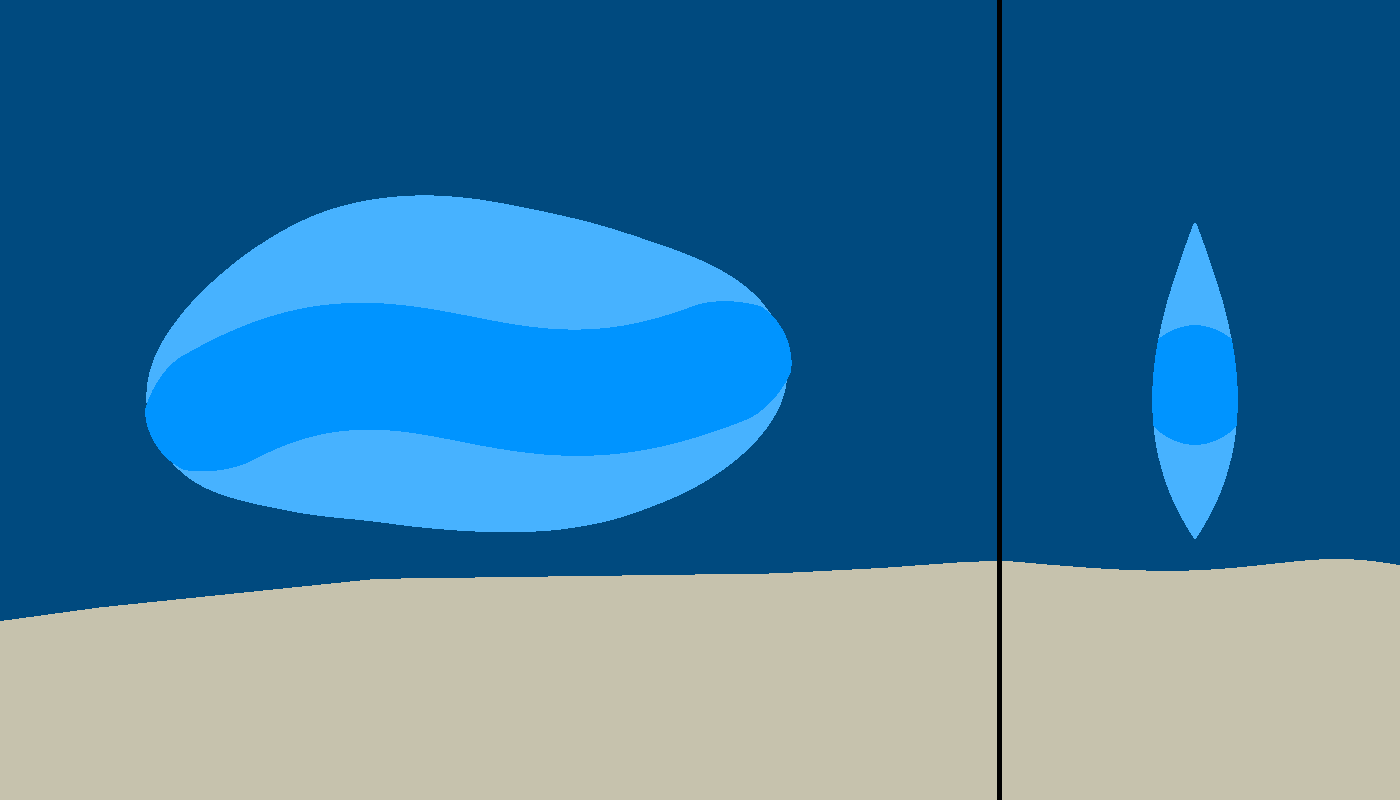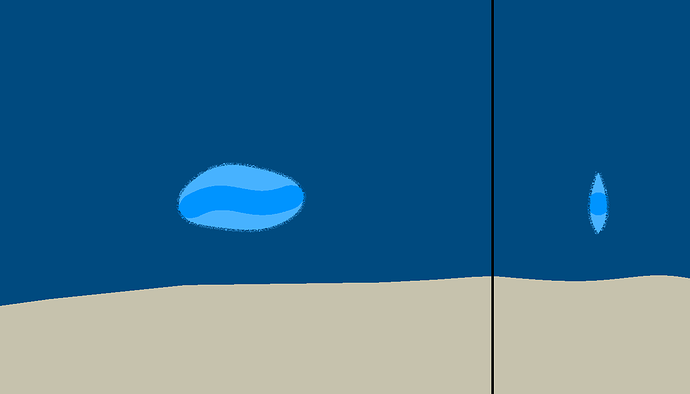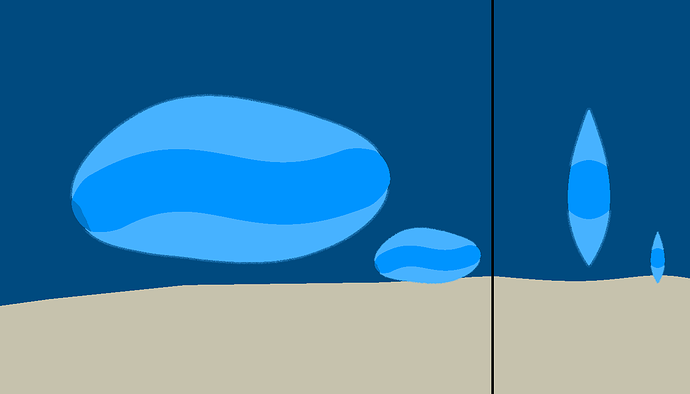I added pictures and changed some things
This species evolved too quickly, but the rest are fine.
If you want me to i’ll evolve part of it and then the other part of it (may not be two parts)
Small thing i made while i finish the turn
Look at the size of Primum colletis, it’s so small it’s almost undetectable
Ok, they firstly must attach themselves to bottom, maybe develop tentacles (without outgrowths), at next evolution they’ll became as i wrote. Is this solution fine?
so when is the next turn?
Now
Turn 4: A second explosion on life has happened, this time being bigger. (Still will be part of the Kovodian explosion Yes i liked the name)
Species
Plant species
Alta colletis
The new and better adapted species make Alta colletis population stay the same for a long time.
Alga maris
By being better adapted than Foliis malis and being big enough that Piscis c. scaena doesn’t affect it, Alga maris population increases.
Alta colletis parasitus
A branch of Alta colletis evolved to become parasitic. This new branch manages to survive thanks to the big Alga maris.
Animal species
Piscis tralucidus
After an explosion of complex and better adapted Piscis species the original Piscis tralucidus starts to dissapear. This species is endangered.
Piscis tralucidus sessilia
As P. tralucidus starts to dissapear P. t. sessilia takes the zones where there once were P. tralucidus.
Piscis capillum
With the dissapearing P. tralucidus new habitats are being accessed by P. capillum. It’s population increases.
Piscis capillum scaena
The new ability of eating other species and their availability makes P. c. scaena appear.
Magnum profunde (Flesheater)
As some P. capillum go deeper onto the planet they adapt to the high pressure and lack of food, feeding themselves with marine snow.
Evolution Tree (The Alta colletis shouldn’t have a capital C)
That’s almost two times the species that existed on the previous turn
Map
One small question about evo tree. What is meant by the words “extinct in wild”?
I think that means that it was practicaly extinct in the places it lives, but not enough to recover/“disturb” other species.
Like to have population 20 in your  game match
game match
I planned to have it there for the future, so for now it’s unused.
some Piscis cauda become bigger and develop a big mouth that helps them swallow some creatures whole, this new species is called Magna os.
some aqua vaccinum slightly increase in size and connect with more of their kind, forming colonies that look like bushes, these new plants are called Rubum maris.
and more of that lore text:
“Hi, This is my second tape, so I uh, discovered more species, examples include what seems to be parasitic plants and sessile filter feeders, and now I’m working on creating an evolutionary tree of these organisms, two uh, actually, for both the animals and plants, they won’t be perfect, since I’m not with my colleagues in the university, who can do this better than me, in fact, I’m near the fossil site where I found these species, I’d like to gather as many fossils as I can before going back to the uni and start examining these weird and uh, almost alien-looking creatures thoroughly, oh and I’m planning to make a food web out of these species after proper examination with my colleagues. That’s it, so uh, bye for now…”
Picsis cauda began to divide. Some populations started to eat parts of body of others animals. They developed mouth. Looking like usual mouth of fish (without teeth), but turned for 90°. Appeared skeleton. Simple jaws, made of a cartilage. It’s enough to kill and pull the pieces of the body, eat them (appeared simple intestine and anus). On the body appeared small fuzz (with nerve endings) to feel fluctuations of water. Next to the jaws appeared small nerve cluster, helping with hunting and eating. Usual hunt: waiting on sand, feeling of approaching the victim, attack from down. Name: later. If it possible (i mean limits for the turn), females more love males with bigger tail fin (created with tail and side fins, it looks like a shovel)
Next population continued to eat plants. They developed a intestine, where live bacterias splitting sellulose. But the plants firstly appear in stomach, where no any bacterias, splitting cellulose, but gastric juice can’t split it. How to find exit? There are many ways to solve the problem. The (name will be added later) simply made so that the food first got into the intestines, where these bacteria live. Then, the food goes back to the stomach, where the food is broken down. and only then does the food get into the normal intestine (it can’t get into the branch because of the valve), where the nutrients are absorbed into the blood. Whole digestive system looks like extended down letter d. Mouth - the hole with muscles.
Next populations appeared by picsis natator. Sexual selection created creatures with 4 round fins (as umbrellas, even move like last). Around the central vessel start to appear thin layer of cartilage, because that way of swimming doesn’t need flexibility of body. Oh, the fins help with moving water through the gills. Name: later
Magnum profunde. They got new tentacles around mouth, helping with collecting the water snow. They needed an exoskeleton, they got it. Not for whole body yet, but legs are protected now. Wow, why the tentacles around mouth (and big part of body) colored red and yellow? New characters of our story. Bacterias of rotting and chemotrophes. Protocooperation, beneficial for every organism, but not obligatory (simpler - symbiosis). Name: again later
Peniculus Imo. Next evolution - not ended last evolution. More, on tentacles and around mouth appeared red and yellow spots (plants and chemotrophes). Name: later.
P.S. you can give names them, if i’ll not change them before then you’ll start to do next turn.
P.P.S. Must i do pictures?
@Nover452 I’d like to suggest something, could you make a pic of all the animals that are extant every 4 turns? like the one you just did.
So every 4 turns i’ll do an image of the species that are alive, right? (If i didn’t understand please tell me)
oh yes more lore
If you want to
@LordLovat will you evolve?
ok lovat didn’t post, i guess we can just continue the game. so pls post the next turn.
Well that’s what i thought too. Next turn will be today or tomorrow if i’m lazy or if online classes absorb all of my time
wow, i’m lucky that we have no online classes here lol, the government decided to stop schools and education for the rest of the year lmao.
i wish i was you that seems better that online classes
it is, no school for the rest of the year lol. lots of free time.
Sorry I didnt have time few days ago but you can keep going!
Quick update before turn 5!
Things that will happen in turn 5
A disaster has happened! Beware of the ice cubes!
Bad species are gone, not all bad species are gone though.
School takes 7/8 of my free time and i can’t work on Olnaria, but i just need to finish the description of what happened to species and the turn is done!
The turn will be posted tomorrow most probably, if i can do it today then i will.
also carnivores are a thing
if you think working on Olnaria is hard and takes a long time, someone can help you, i have lots of free time, so maybe i can.

